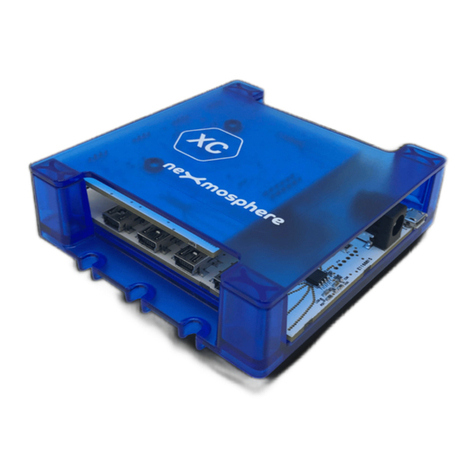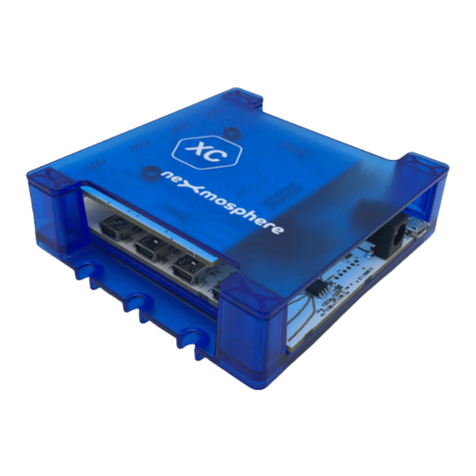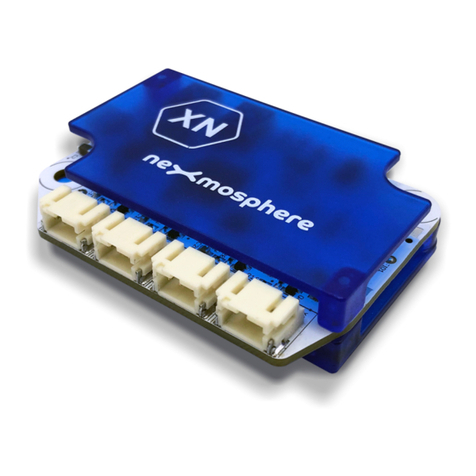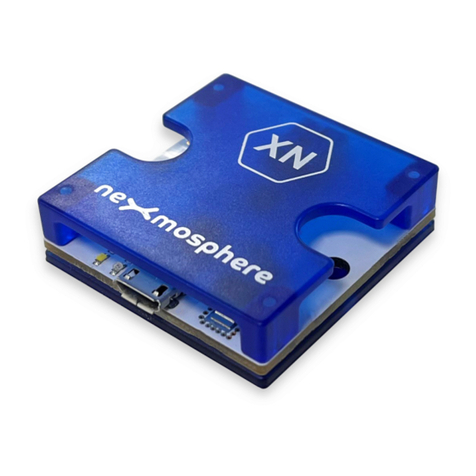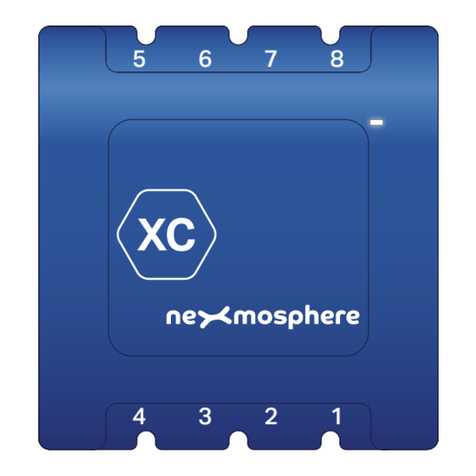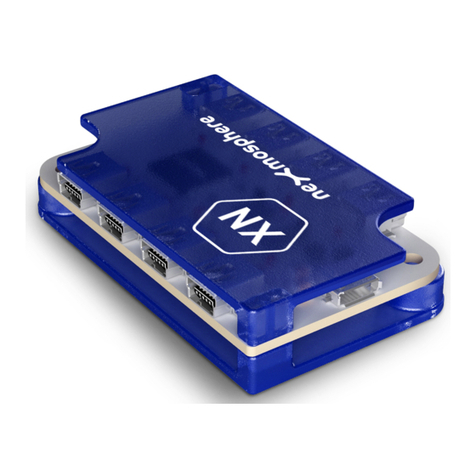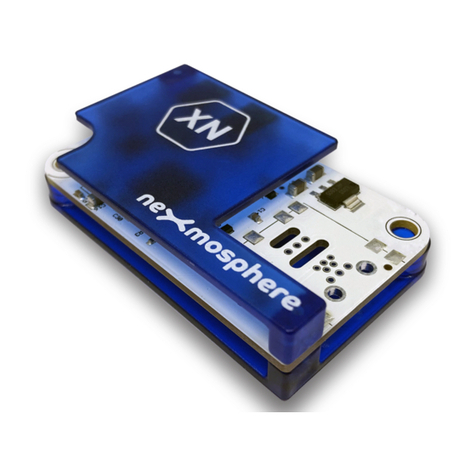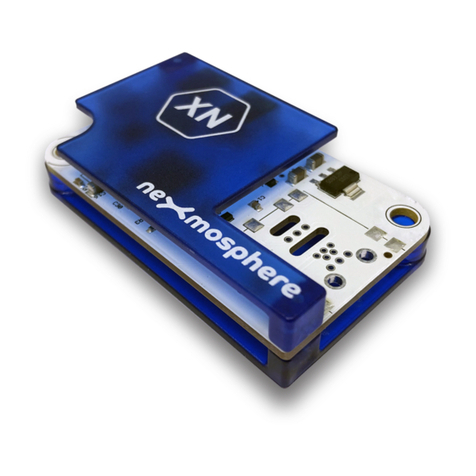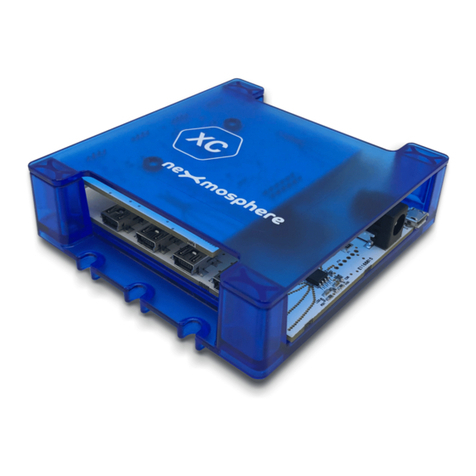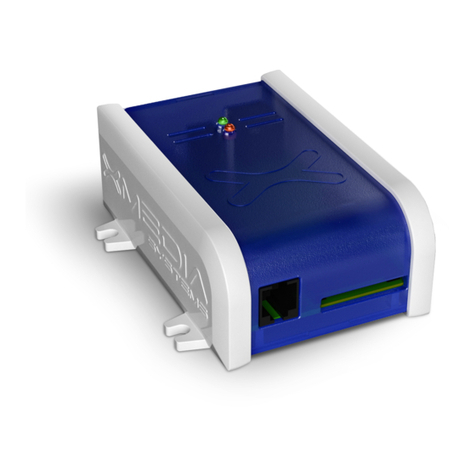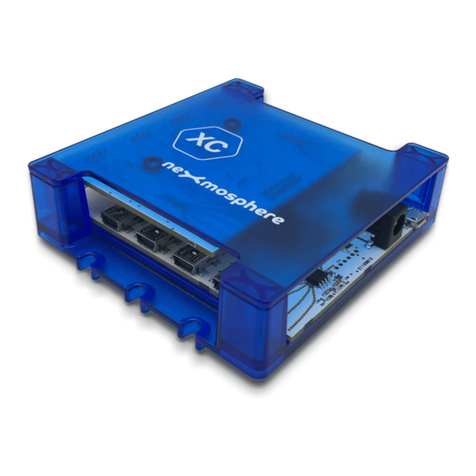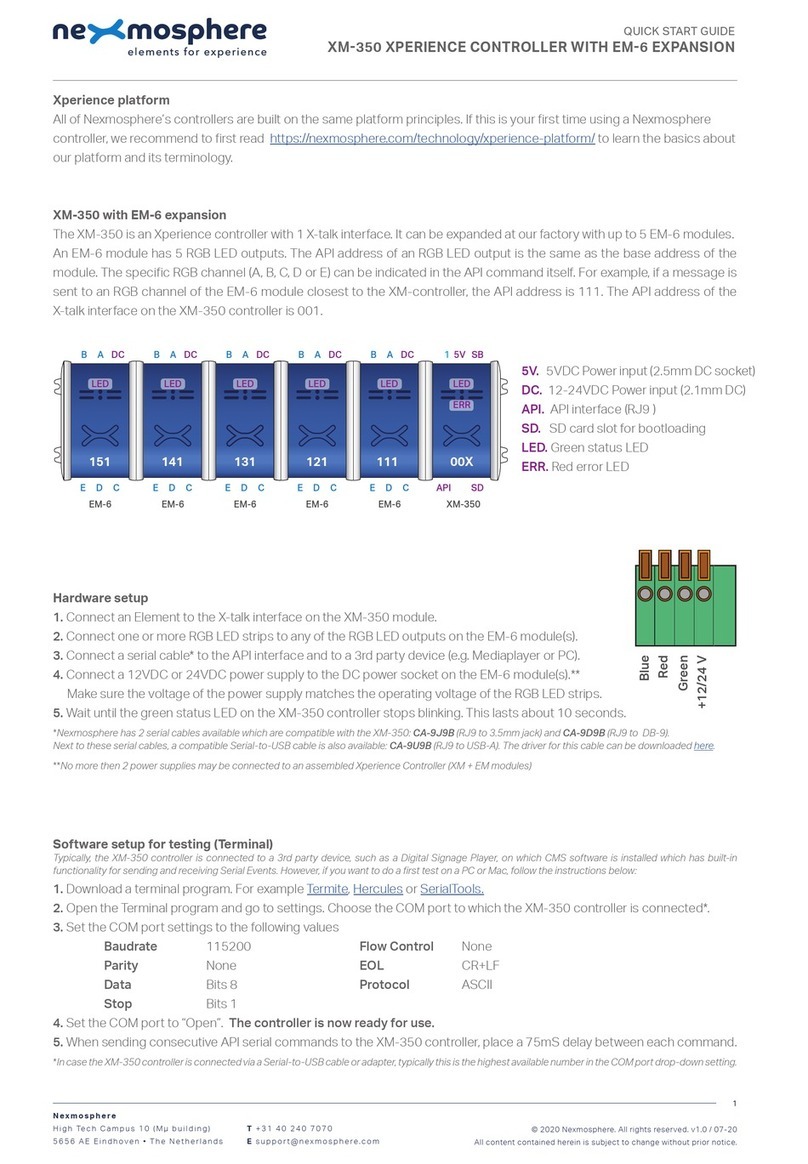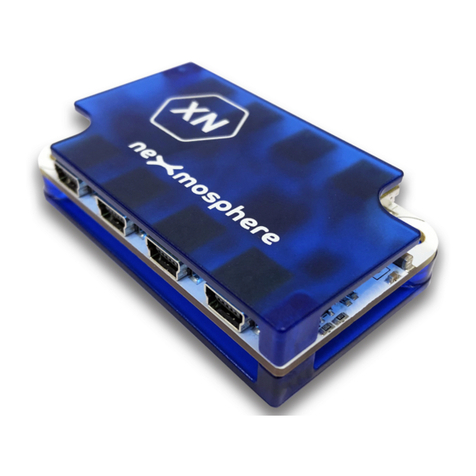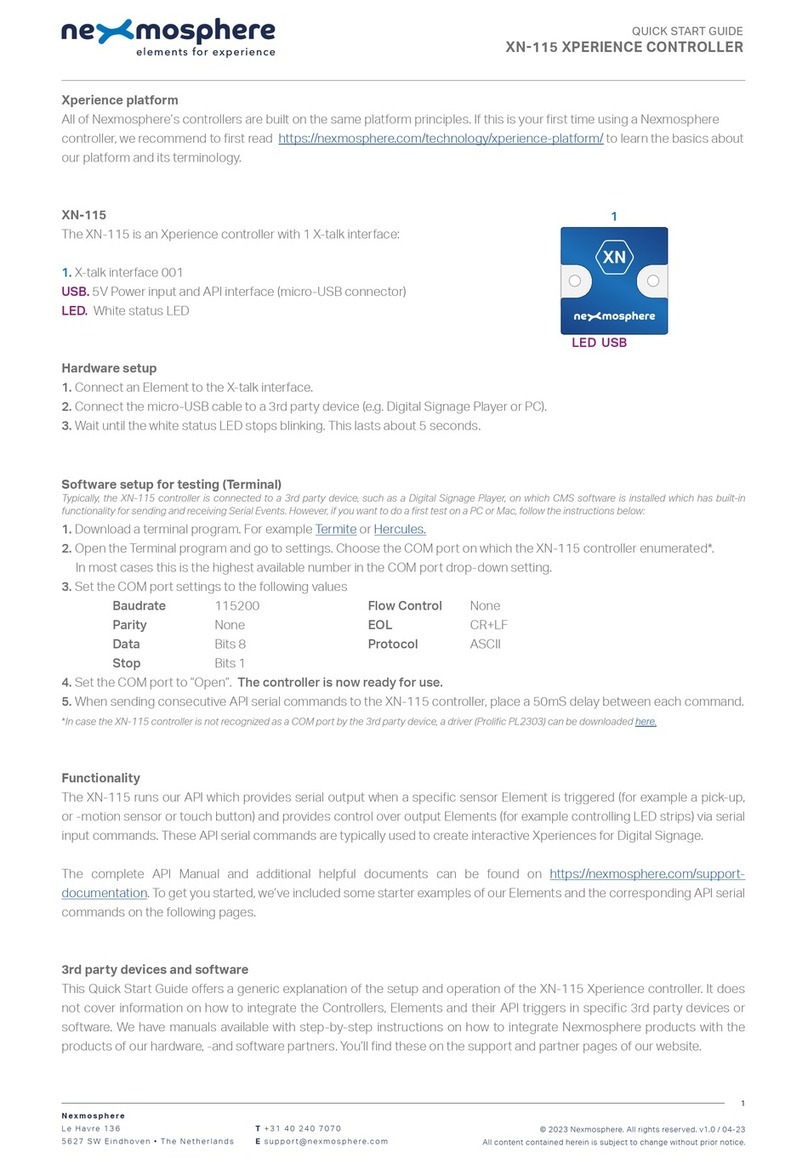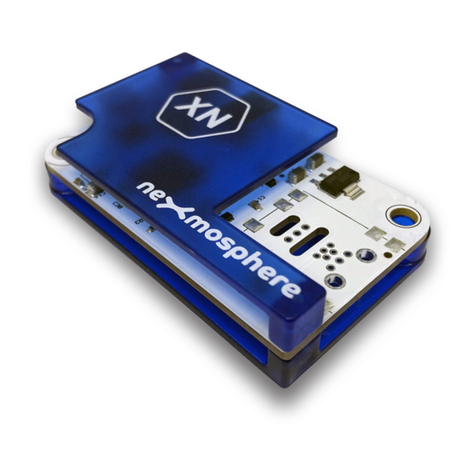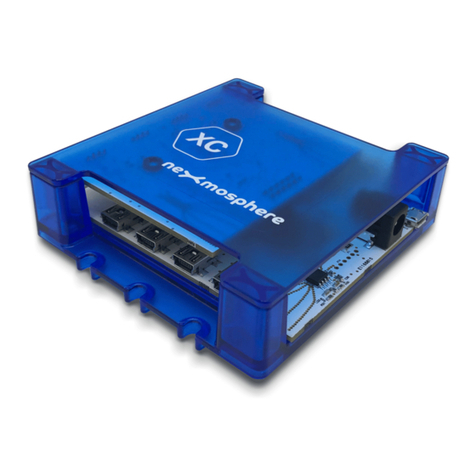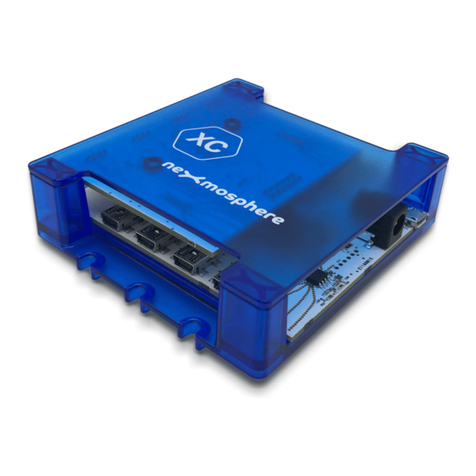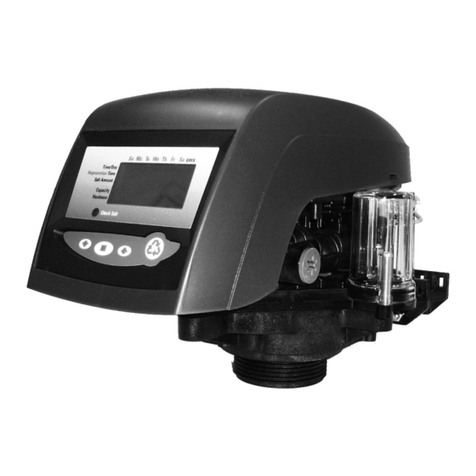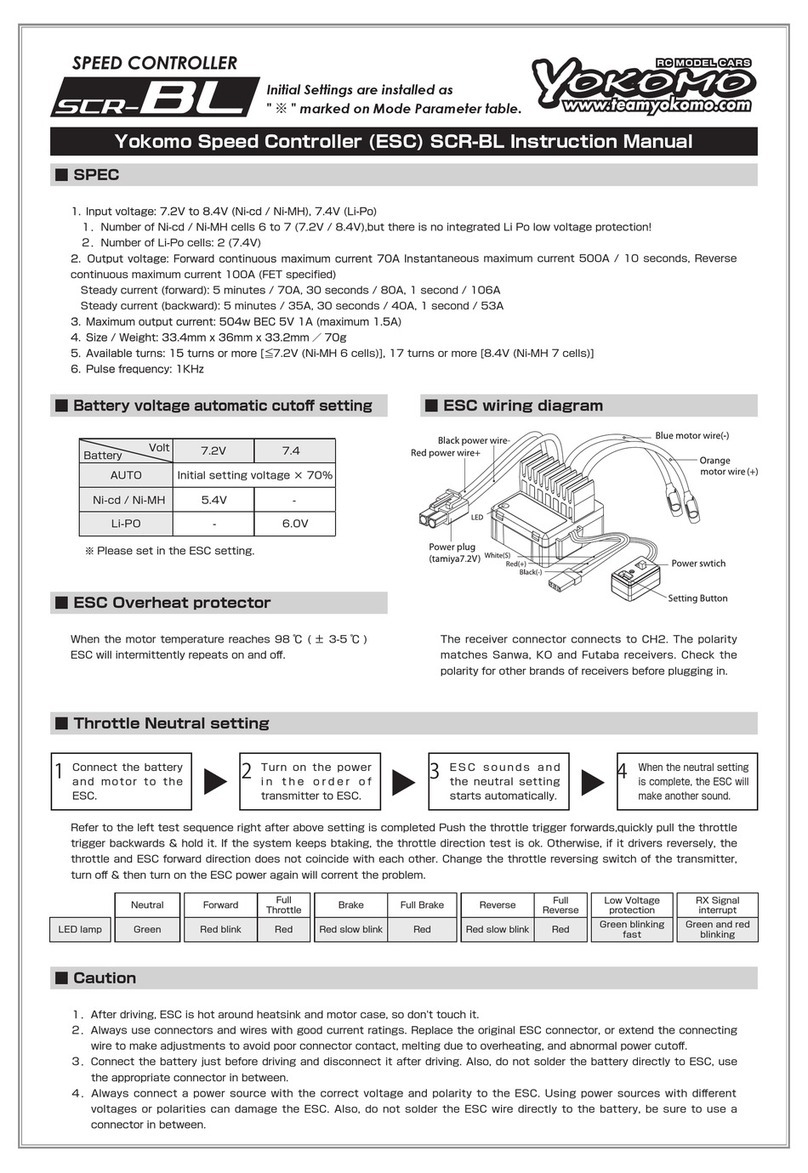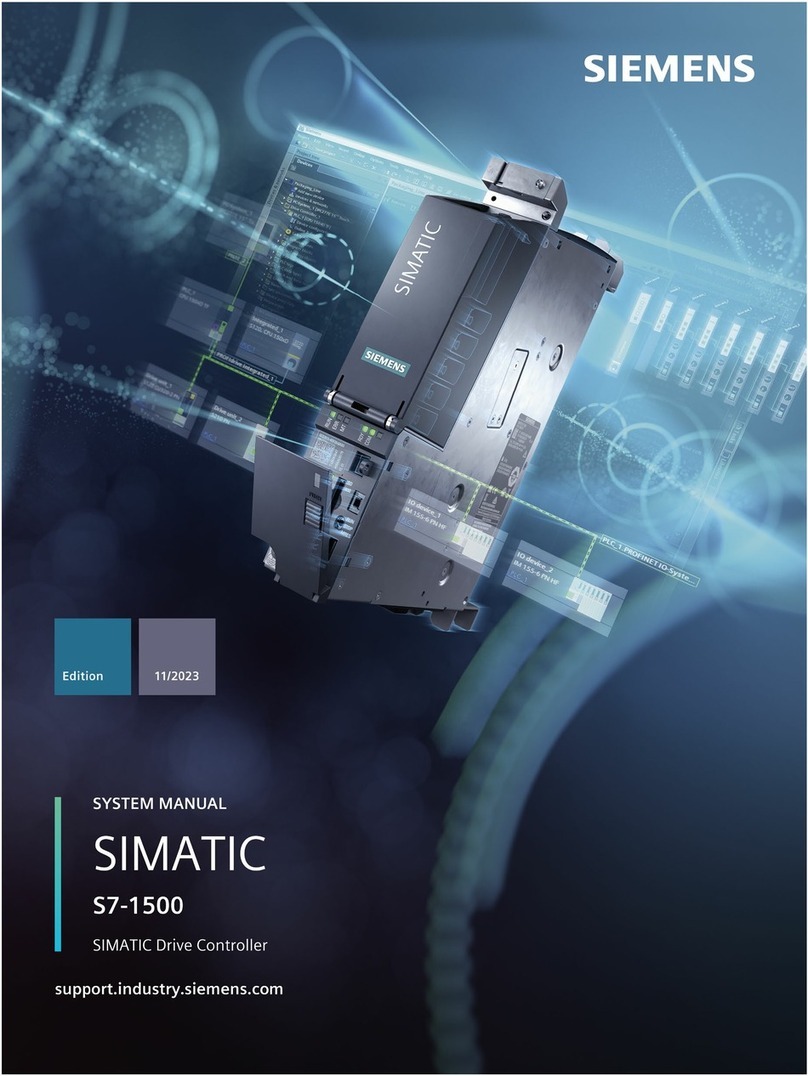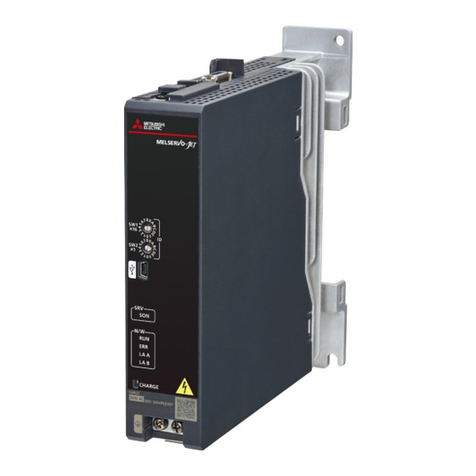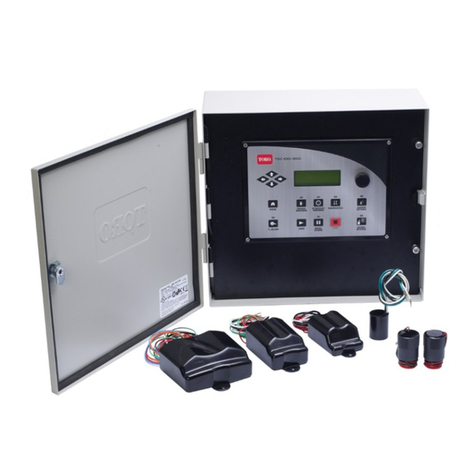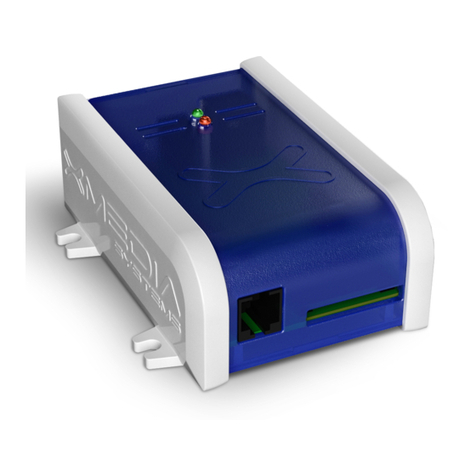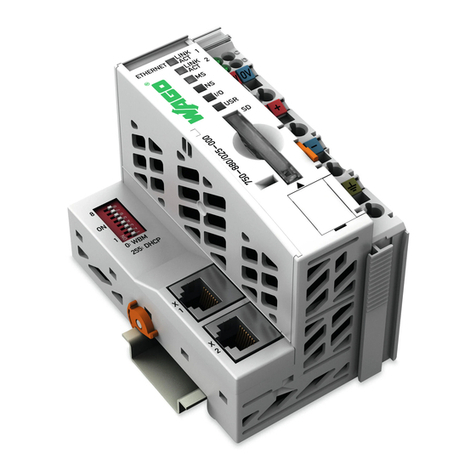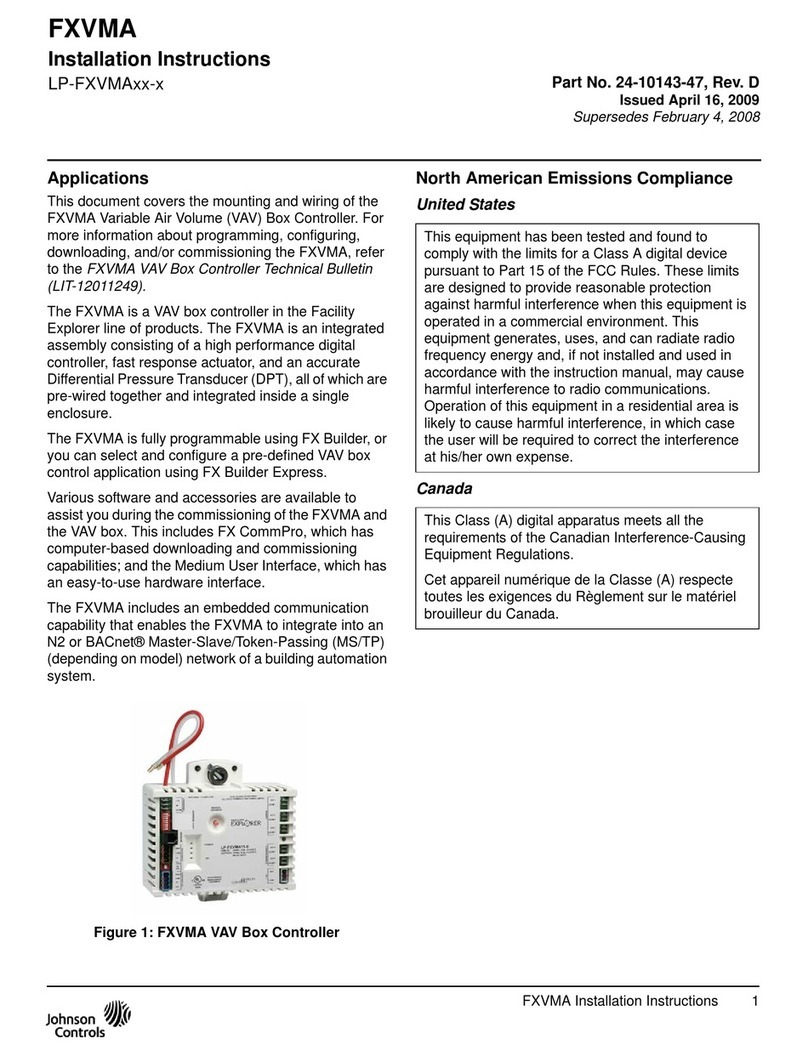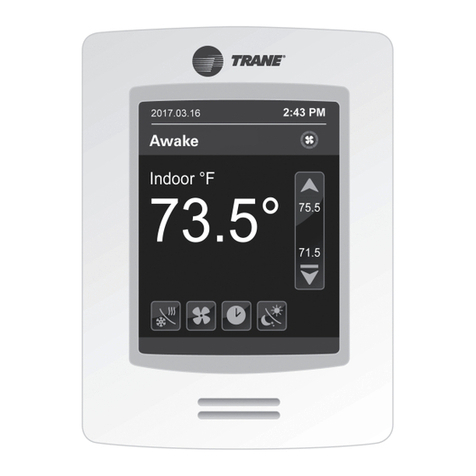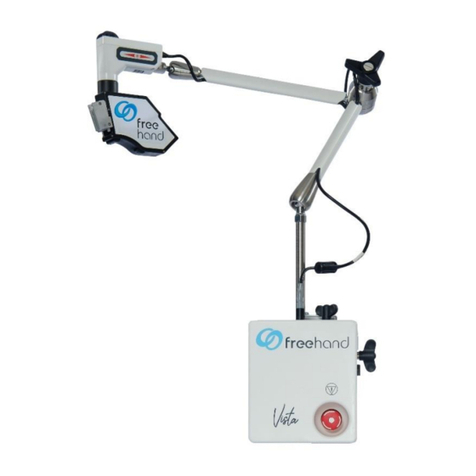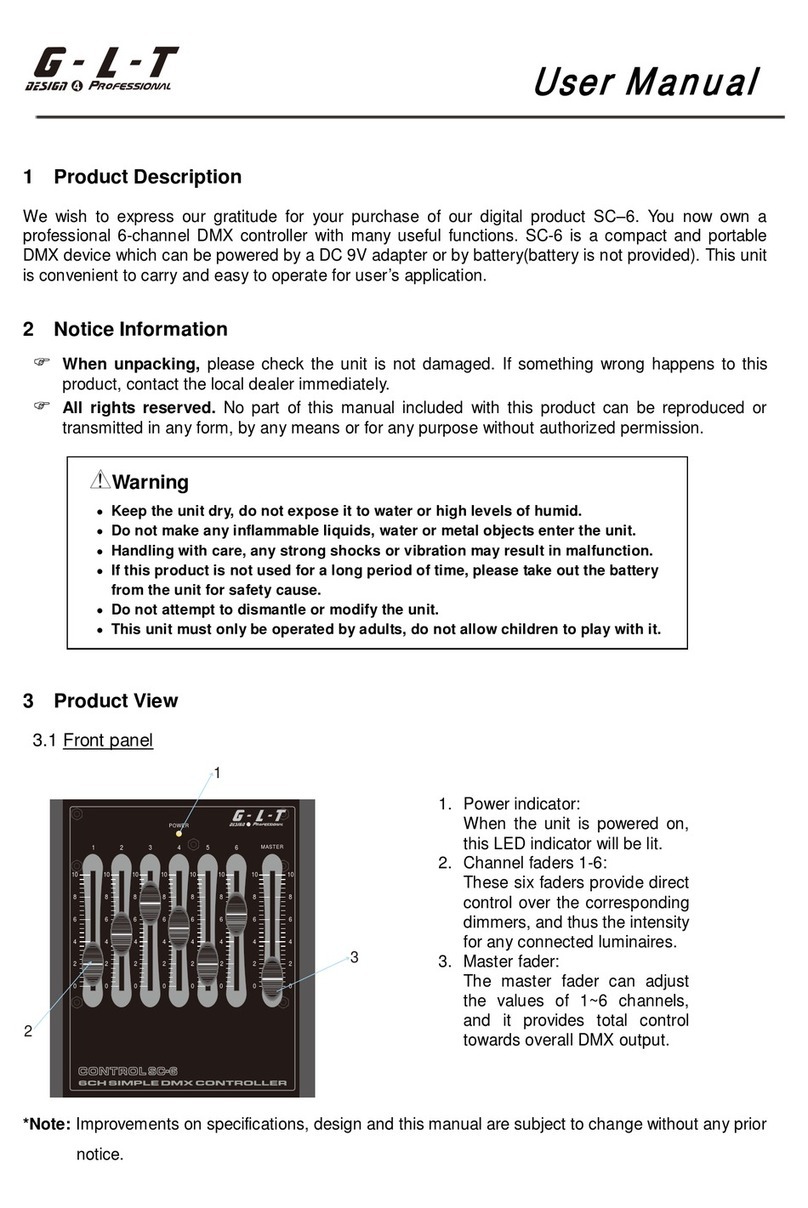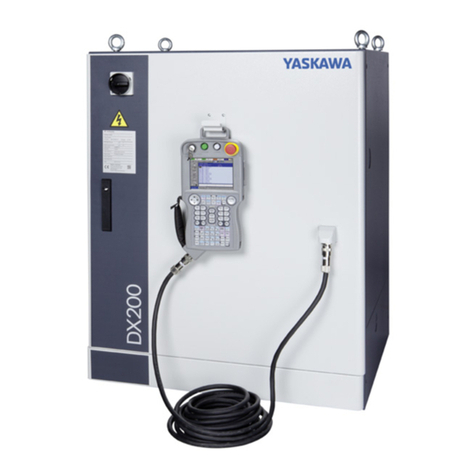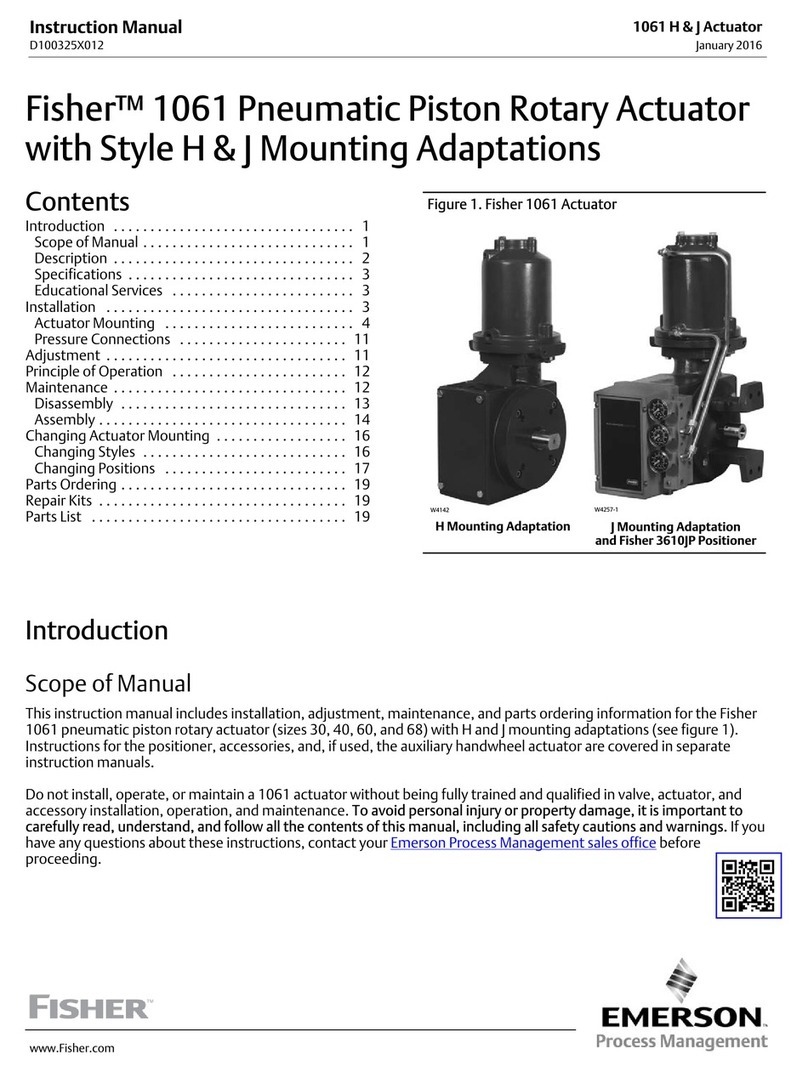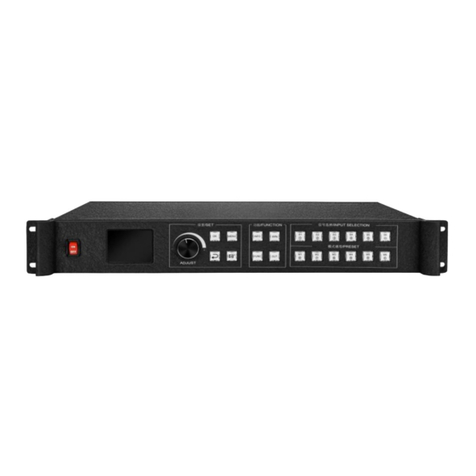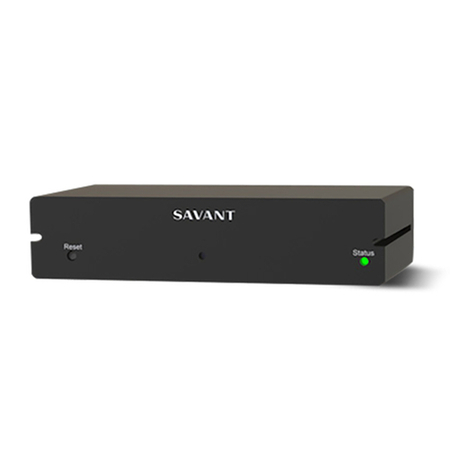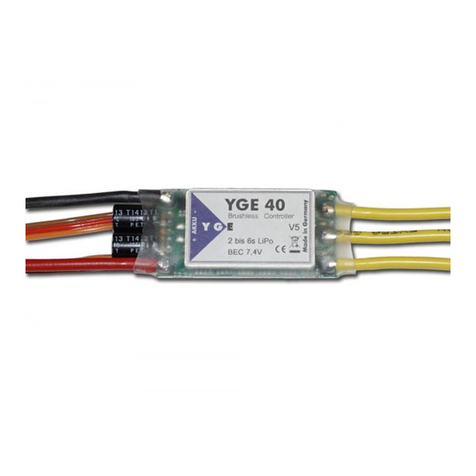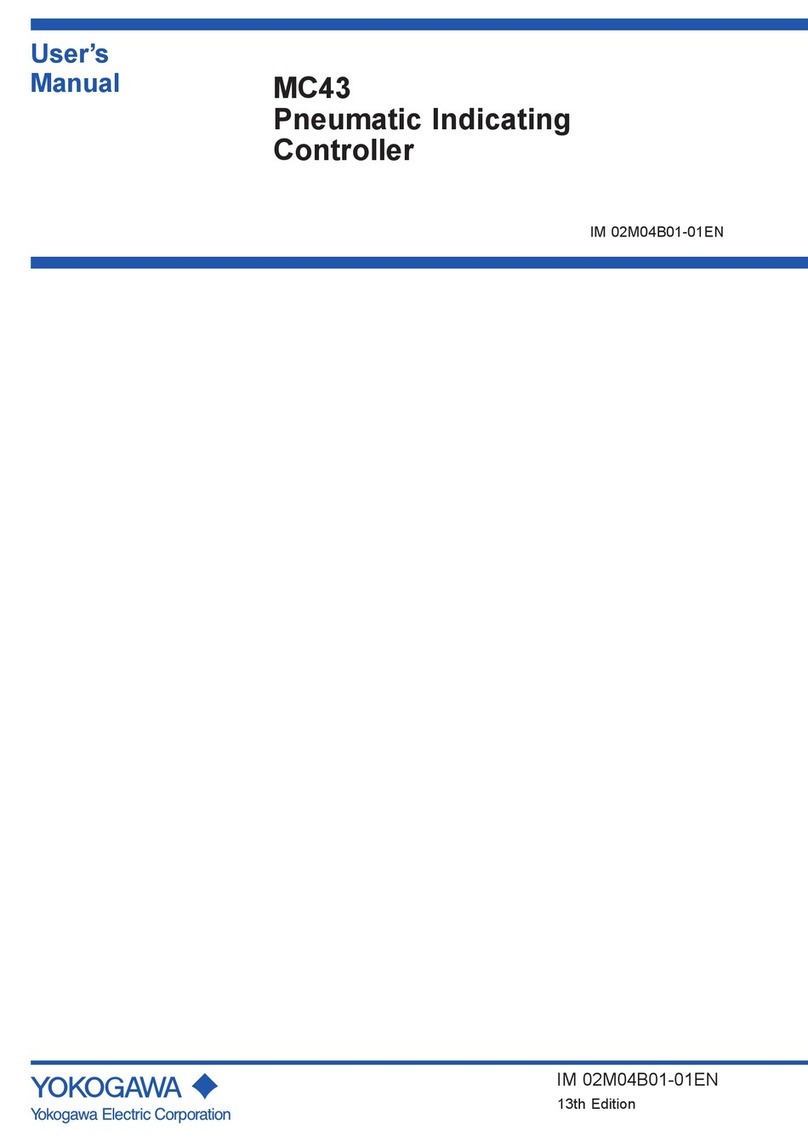
Xperience platform
All of Nexmosphere’s controllers are built on the same platform principles. If this is your rst time using a Nexmosphere
controller, we recommend to rst read https://nexmosphere.com/technology/xperience-platform/ to learn the basics about
our platform and its terminology.
XM-350 with EM-4 expansion
The XM-350 is an Xperience controller with 1 X-talk interface. It can be expanded at our factory with up to 5 EM-4 modules.
An EM-4 module has 4 audio switches which can be used both as input to connect an audio source and as output to connect
speakers/headphones. The API address of an audio switch is determined by adding the number of the output to the base
address of the XM or EM module. For example, if a message is sent to audio switch 2 of the EM-4 module closest to the XM-
controller, the API address of the LED output is 112
. The API address of the X-talk interface on the XM-350 controller is 001.
Hardware setup
1. Connect an Element to the X-talk interface on the XM-350 module.
2. Connect an audio source to one of the audio switches using an audio cable with 3.5mm jack connector.
3. Connect one or more speaker to any of the audio switches using an audio cable with 3.5mm jack connector.
4. Connect a serial cable* to the API interface and to a 3rd party device (e.g. Mediaplayer or PC).
5. Connect a 5VDC power supply to the DC power socket on the XM-350 module. **
6. Wait until the green status LED on the XM-350 controller stops blinking. This lasts about 10 seconds.
*Nexmosphere has 2 serial cables available which are compatible with the XM-350: CA-9J9B (RJ9 to 3.5mm jack) and CA-9D9B (RJ9 to DB-9).
Next to these serial cables, a compatible Serial-to-USB cable is also available: CA-9U9B (RJ9 to USB-A). The driver for this cable can be downloaded here.
**No more then 2 power supplies may be connected to an assembled Xperience Controller (XM + EM modules)
Software setup for testing (Terminal)
Typically, the XM-350 controller is connected to a 3rd party device, such as a Digital Signage Player, on which CMS software is installed which has built-in
functionality for sending and receiving Serial Events. However, if you want to do a rst test on a PC or Mac, follow the instructions below:
1. Download a terminal program. For example Termite, Hercules or SerialTools.
2. Open the Terminal program and go to settings. Choose the COM port to which the XM-350 controller is connected*.
3. Set the COM port settings to the following values
Baudrate 115200 Flow Control None
Parity None EOL CR+LF
Data Bits 8 Protocol ASCII
Stop Bits 1
4. Set the COM port to “Open”. The controller is now ready for use.
5. When sending consecutive API serial commands to the XM-350 controller, place a 75mS delay between each command.
*In case the XM-350 controller is connected via a Serial-to-USB cable or adapter, typically this is the highest available number in the COM port drop-down setting.
Nexmosphere
Le Havre 136
5627 SW Eindhoven • The Netherlands
T +31 40 240 7070
Esupport@nexmosphere.com
QUICK START GUIDE
XM-350 XPERIENCE CONTROLLER WITH EM-4 EXPANSION
© 2020 Nexmosphere. All rights reserved. v1.0 / 11-20
All content contained herein is subject to change without prior notice.
1
11X12X13X14X15X 00X
1
API
SB5V
SD
4 3 2 14 3 2 14 3 2 14 3 2 14 3 2 14 3 2 14 3 2 1
LED LED LED LED LED LED
ERR
XM-350EM-4EM-4EM-4EM-4 EM-4
5V. 5VDC Power input (2.5mm DC socket)
DC. 12VDC Power input (2.1mm DC)
API. API interface (RJ9 )
SD. SD card slot for bootloading
LED. Green status LED
ERR. Red error LED

